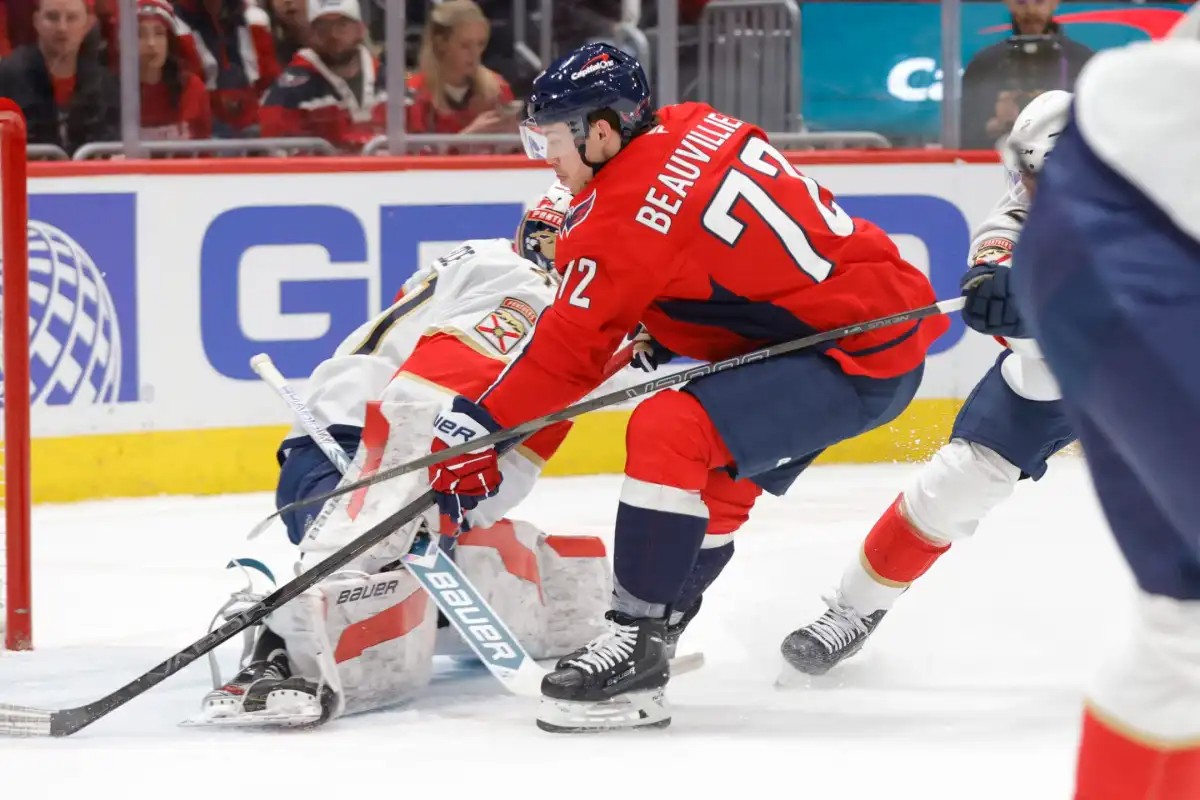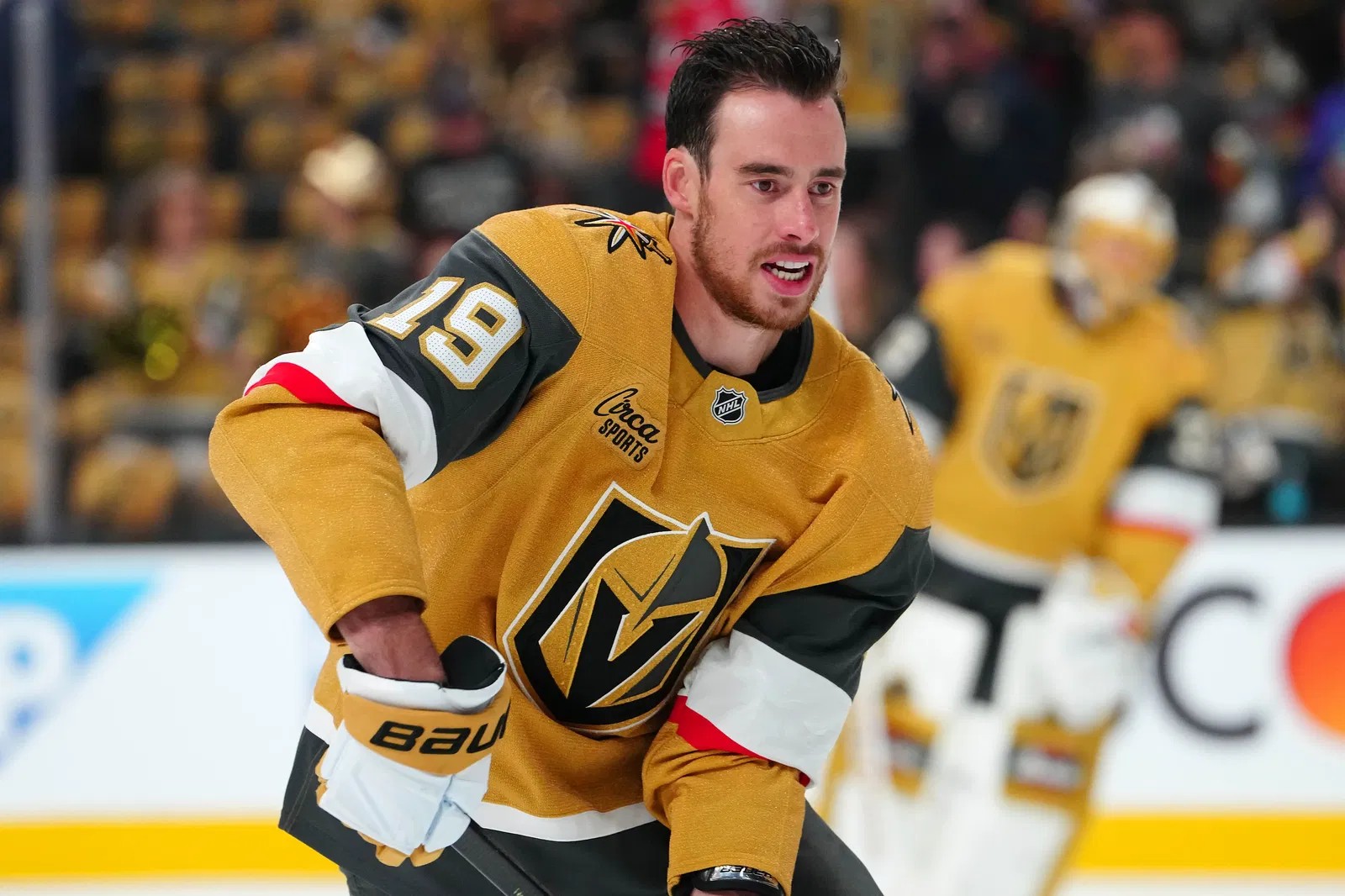Our free agency series continues with an examination of middle-six forward options for the Maple Leafs.
As of now, the Leafs‘ roster consists of the following up front:
Top Six Forwards: Matthews, Knies, Nylander, McMann/Domi
Bottom Six Forwards: McMann/Domi, Laughton, Holmberg, Jarnkrok
There is a ton of room for volatility there — chief among the question marks are whether they can shed David Kampf’s contract, and if Calle Jarnkrok will remain on the team — but no matter how we boil it down, the Leafs need to add three or four quality forwards, depending on who they retain.
– Part 1 of the Free Agent Targets series
If you missed Part 1, I looked at three difference-makers of potential interest to the Leafs once Noon EST on July 1 arrives, assuming they make it to the open market. Keep an eye out for Part 3 covering the depth options at the forward position.
Reilly Smith

- 2024-25 season: 79 games, 13 goals, 40 points, 15:26 per game, 50.17 CF%, 51.78 xGF%
- 2025 Playoffs: 11 games, 3 goals, 4 points, 15:36 per game
- Level of interest: Moderate to high, especially if they can’t get Marchand or acquire some other top-of-the-line wingers. Smith is a good plug-and-play player.
Things to Like
Reilly Smith is a player we flagged at the deadline as a potentially good fit for the Leafs. Not much has changed since. Smith was ultimately traded to Vegas, where he was a solid secondary scorer, tallying 11 points in 21 games, followed by a few big playoff goals (three goals and four points in 11 playoff games).
Smith is 34, so he has established what he is in the league by this point. He’s a solid middle-six winger who is good at pretty much everything but isn’t high-end at anything. He can chip in offense, he’s good on the penalty kill, he can play on a power-play unit, and he can find a way to fit on any line.
In the playoffs, Smith’s scoring elevates. He’s amassed 83 points in 117 playoff games and owns a Stanley Cup ring. He’s enjoyed a really good NHL career; he’s 81 games away from 1,000 and has over 500 points already. The Mimico native is coming off back-to-back 13-goal, 40-point seasons. Over his career, he’s never been out-attempted at five-on-five in a single season. This has a big appeal for a Leafs team that was underwhelming at controlling play in 2024-25.
You can easily envision Smith playing on basically any Leafs line, and the versatility is a real positive. The Leafs aren’t going to own as much top-end talent next season, so having a lineup with plenty of options to move around — anchored by two star players, a solid defense, and a high-end goalie tandem — makes a lot of sense as a pivot. Smith can fit into this concept and has shown he elevates his game in the playoffs as well.
Causes for Concern
Smith is 34 years of age, so there’s inherent risk with any player of his age profile in today’s game. His points-per-game output has dropped in three straight seasons, and he just tied his lowest goal-scoring rate of his career. It’s possible this was partially due to Smith playing on a Rangers team that was a mess last season, but the drop in production — coupled with his age — could indicate a player very much in decline.
Smith is still a useful contributor even if he continues to decline, but the price would have to reflect what he’s about to do rather than what he’s done, and that’s generally not how free agency works.
Pius Suter

- 2024-25 season: 81 games, 25 goals, 46 points, 17:21 per game, 49.39 CF%, 50.33 xGF%
- Level of interest: Moderate to high, depending on how their other center options shake out (Tavares, trades, etc.).
Things to Like
Suter is coming off a career season across the board, setting new personal bests in goals, points, and ice time per game. While the 25 goals is a big increase, he has scored at least 14 goals every season, so he can clearly put the puck in the net at a reasonable enough clip. While the career 13.1% shooter probably isn’t going to shoot 18.1% again, an uptick and more offense in general is a nice development for a center who is primarily known as a shutdown player.
The fact that Suter is a center is the main reason he’s listed in this piece. It’s slim pickings down the middle, and at 29, Suter is also at a prime age. He’s a versatile Swiss army knife type who you can put basically anywhere in the lineup except at 1C (including playing wing on the top line). He’s also shown ability as a matchup center and has handled tough assignments. Over the past two seasons, he’s won his minutes in goal differential at five-on-five.
Adding Suter to the Leafs’ lineup would open up all sorts of options and benefits. It would free up Matthews to eat more offensively. Suter could also potentially work as a defensive cleaner alongside Nylander or form a shutdown line with Scott Laughton. A few years ago, Phillip Danault signed a six-year deal for $5.5 million per season, and Suter has a lot of similarities; Danault is a high-end matchup center and has been worth every penny of his contract in LA.
Florida has a similar setup, where Anton Lundell is a high end matchup center that anchors their third line. He’s a really good player who takes on tough assignments, and it frees up Barkov at times. This is something Suter can somewhat replicate, although Lundell has also put up 35 points in 47 playoff games over the last two years.
Naturally, Suter is also good on the penalty kill, and a team can never have enough quality penalty killers.
At 29 — and with a Leafs center group that currently consists of Matthews, Scott Laughton, maybe Max Domi, and either Pontus Holmberg or David Kampf — Suter basically has to be on this list by virtue of the fact that he’s a positive, prime-aged difference maker at the center-ice position.
Causes for Concern
There are a few legitimate concerns to flag beyond the fact that Suter just produced a contract year. Suter stands just 5’11 and is not a particularly fast skater. While it’s great that he excels due to his smarts and positioning, I’m not exactly in love with entering bidding wars for players on the smaller and slower side.
Suter is also fairly mediocre in the faceoff circle — a career 45.9 percent who won just 42.6 percent last season. Stylistically, I’d prefer the Leafs add as much speed and aggression as possible, and I’m not in love with a shutdown center who is underwhelming on the faceoff dot, although they can find ways to work around it (Laughton could take more of the faceoffs, for example).
There will be a robust market for Suter due to the reasons listed above, so it’s not like this is a player sliding under the radar who the Leafs can snag at a bargain price. He will cost them, and if he’s making $5 million and reverts to a 30-point player, it will be tough to swallow. He better be one of the best defensive centers in the league in such a case.
When the Canucks made the playoffs last season, Suter acquitted himself okay and won his five-on-five minutes 8-6 despite 39% of his zone starts coming in the offensive end, but he produced just two goals and three points in 13 games.
There’s no question Suter would help the Leafs at center, but he’s not really a proper 2C, so they’d still need to fill that hole.
Connor Brown

- 2024-25 Season: 82 games, 13 goals, 30 points, 14:01 per game, 48.73 CF%, 52.25 xGF%
- 2025 Playoffs: 20 games, 5 goals, 9 points, 15:41 per game
- Level of interest: High, but they can’t give him a silly contract. He should never have been traded, and he was born to be a Leaf.
Things to Like
Brown was a quality Leaf before he was a cap casualty for the sole purpose of getting rid of Nikita Zaitsev’s contract. He produced a 43-point season right afterward in Ottawa, followed by a 21-goal season (in just 56 games) and a 39-point campaign before a trade to Washington, where he immediately tore his ACL. Brown signed with Edmonton after the injury rehab and took 55 games to score a goal, but in the 2024 playoffs, he showed real signs of life, including a beautiful shorthanded goal in Game 5 of the Stanley Cup Finals.
With a full season under his belt after the injury, Brown returned to Edmonton, played in all 82 games for the first time since he was traded by Toronto, and potted a respectable 12 goals and 30 points. Only seven Leafs forwards hit double-digits in goals this past season (plus Scott Laughton, technically). There were real depth scoring issues in Toronto, where Brown would have ranked seventh in goals and ninth in points.
In the playoffs, Brown has recorded a solid five goals and eight points through 19 games. Five regular Leafs forwards didn’t score a goal in the playoffs, and none produced more than three points in a minimum 12-game run. Brown won’t score the lights out, but he’s a legitimate secondary contributor. Additionally, he’s a high-end penalty killer, and the Leafs are likely losing at least one of those, if not more.
Brown may not be overly big or physical, but he’s a worker who plays the right way and brings an honest game. He would have a place in Berube’s system as the Leafs’ head coach desires players who get in on the forecheck and grind in the offensive zone.
Brown was teammates with Scott Laughton in minor hockey, and I’d wager the two would team up well as part of a two-way line and penalty killing duo. In Edmonton, Brown moves all around the lineup, including time alongside Connor McDavid in the Cup finals this spring. I’d wager he could respectably fill spot duty beside Auston Matthews and Matthew Knies, allowing the Leafs to move other players around and spread their talent out at times for different looks.
Really, the Leafs could put Brown on any line and he’d find his way to contribute because he’s just a good all-around hockey player. This would be a nice homecoming, with the usual caveats about the contract.
Causes for Concern
Considering Brown’s role — versatile top-nine, secondary scorer who is a high-end penalty killer — I don’t think there’s much risk in terms of the player. He’s 31, clearly healthy again, and will contribute within reason.
The biggest concern worth flagging is whether the Leafs move on from Calle Jarnkrok, as Brown is essentially an upgraded version of what they want Jarnkrok to be on account of Brown actually chipping in during the playoffs. In the past two runs with the Oilers, Brown has produced eight goals and 14 points in 38 playoff games. In 30 playoff games with the Leafs, Jarnkrok has one goal and four points. If the Leafs can’t trade Jarnkrok for much of anything, should they really have two smallish right-wingers who provide the same thing on the team? Probably not.
If the Leafs can get something of reasonable value in exchange for Jarnkrok, adding a pick and upgrading on Jarnkrok with Brown would be a sensible decision at the right price.
Anthony Beauvillier

- 2024-25 Season: 81 games, 15 goals, 25 points, 12:52 per game, 52.23 CF%, 52.78 xGF%
- 2025 Playoffs: 10 games, 2 goals, 6 points, 13:03 per game
- Level of interest: Moderate and depends on other depth moves the Leafs make, but he’s a good option.
Things to Like
A first-round pick in 2015, Beauvillier scored 21 goals in his second season in the league, but he has never matched that mark since or turned into the top-six forward many expected him to become. That said, over the past few years, he has started to figure out what he is in the league and has become an effective player as a result.
Beauvillier has speed to burn and is consequently an effective forechecker. I don’t think the Leafs were a slow team last season, but they weren’t full of speedsters, and I generally think adding more speed to their lineup is a good thing.
Beauvillier can chip in double-digit goal totals — he scored 15 last season, which is a tad high to expect for him consistently — and he’ll disrupt defenders with his pace. He won’t produce enough to consistently play in the top six, but he’s a fine option to move up for spot duty and provide a top-six line with a shot in the arm with his tenacity. At 28, he’s in his prime years and should have plenty of good hockey ahead of him.
Beauvillier has also quietly proven to be an effective playoff player. He played on the top line for long stretches in Washington and finished with six points in 10 playoff games this spring. Over his career, he has 37 playoff points in 65 playoff games, a big increase over his regular-season production (.43 ppg in the regular season vs. .57 in the playoffs). On this Leafs team, a track record of elevated playoff production is a big plus.
Causes for Concern
Beauvillier is on the smaller side and didn’t penalty kill this season, so as a bottom-six player, both of those facts are concerning. He’s not exactly a high-end checker, either. So, how exactly does this play out overall on this Leafs team? Is he going to play on a checking line with, say, Laughton, as a player who isn’t exactly a checker? Is he going to play on a scoring line with Max Domi even though he’s not a big scorer? Both Laughton and Domi are on the smaller side themselves, so adding another smaller forward without a specialty or penalty-killing ability would be fair to question.

































